Wondering how to fix PerfNet error 2004 on Windows 10 on your PC?
Each version of Windows comes with an administrative tool called Windows Event Viewer. This tool lets you view events, errors, and other important information regarding your operating system.
Recently, several Windows users reported that the Event Viewer is continuously displaying the PerfNet Error 2004 error. We had a look into this issue and discovered that it can be caused by a number of different reasons including:
- Incompatibility of Ivoclar Digital app with .NET framework
- Third-party conflict
- Incorrect configuration of the Server service
- Outdated GPU drivers
- Corrupt files and bugs within the system
If you are facing a similar issue, you are in the right place because in this guide, we will walk you through different troubleshooting methods to resolve this issue in detail.
Let’s get started.
1. Uninstall Ivoclar Digital app.
In the vast majority of cases, the problem is in an app developed by Ivoclar Digital. Due to the fact that the developer failed to provide updates to patch a .NET security exploit within the application, Microsoft has blocked its installation on Windows 10 computers.
If you are using Ivoclar Digital on your PC, the easiest way to resolve the error at hand is by uninstalling it.
Here is how you can do that:
- Press Windows + R keys simultaneously on your keyboard to open a Run dialogue box.
- Inside the text field of the dialogue box, type appwiz.cpl and hit Enter to launch Programs and Features window.
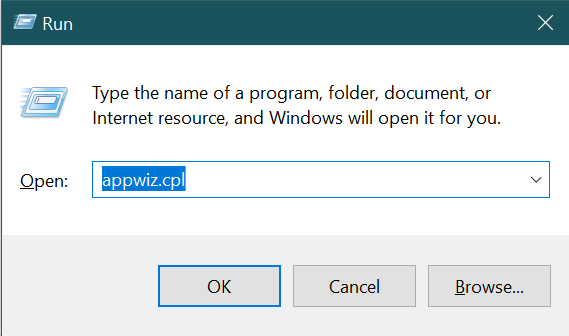
- Once you are inside the Programs and Features window, look for problematic applications published by Ivoclar Digital.
- After identifying the applications, right-click on them one by one and select Uninstall.
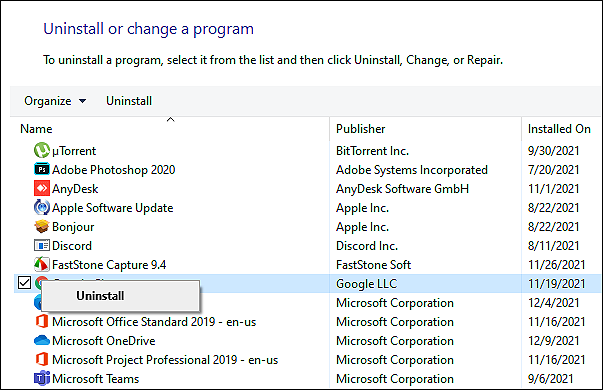
- Follow the on-screen instructions to proceed and once done, restart your PC.
If the Ivoclar app was causing the issue, uninstalling it should fix the PerfNet error 2004 on your Windows.
2. Clean Boot your PC.
It is possible that the issue is being caused due to third-party conflict. In this case, you can clean boot your PC to identify the problematic applications and get rid of them.
In a “clean boot,” Windows starts up with a minimal set of drivers and startup programs, allowing you to determine whether a background program interferes with your applications.
Here is how you can clean boot your PC:
- First, you need to restart your PC in a Clean Boot State. For this, you need to type msconfig in the search bar and hit Open the System Configuration utility.
- Go to the General tab and select the Selective Startup option.
- Now uncheck the Load Startup items option.
- Checkmark the Load System Services and the Use Original boot configuration options.
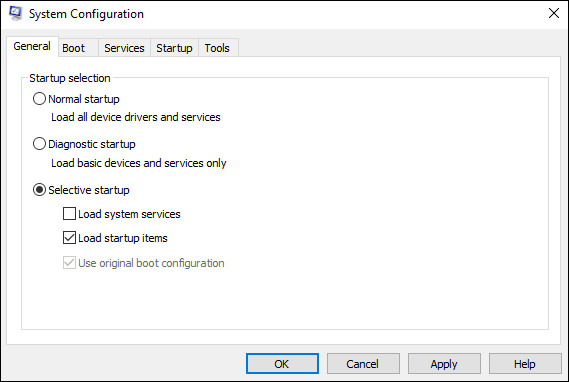
- Next, go to the Services tab and checkmark the Hide All Microsoft Services check box.
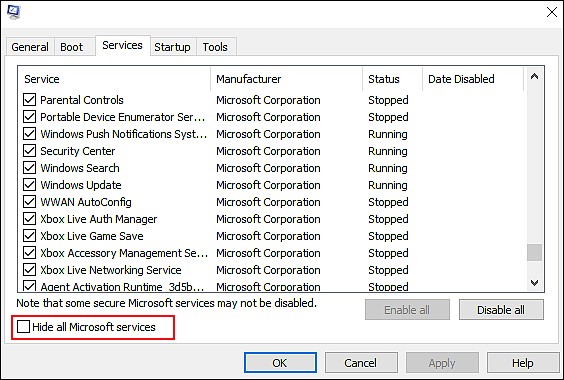
- Click on Disable all and select Apply to confirm the changes.
You can now restart your PC and identify problematic programs.
3. Restart the Server Service.
According to our findings, you can also expect to see this error message if your system tries to modify settings on services that depend on the main Server service.
Depending on whether this scenario applies, you may be able to resolve the issue by editing the Startup Type of the Server service through the Services window, and then restarting the service.
Here is how you can do that:
- Press Windows + R keys simultaneously on your keyboard to open a Run dialogue box.
- Inside the text field of the dialogue box, type services.msc and hit Enter to launch Services window.

- Once you are inside the Services screen, locate and right-click on a service named Server.

- Select Properties from the list of options available and navigate to the General tab.
- Expand the drop-down menu against Startup type and select Automatic.
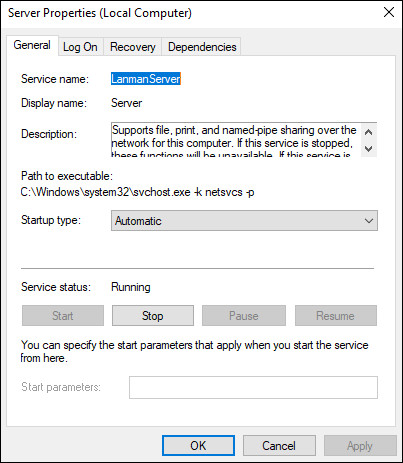
- Once done, click on the Stop button under Service status and wait for the service to stop.
- Next, click on the Start service to restart the service and click on Apply to save the changes.
Hopefully, doing so will fix the error without any issues.
4. Register the mobsync.dll File.
If the application you are trying to run fails to register a DLL (Dynamic Link Library) file, you are likely to face the issue at hand. Typically, this problem occurs with mobsync.dll (Microsoft Synchronization Manager).
In order to resolve the PerfNet Error 2004, you should take time to re-register the Dynamic Link Library (mobsync.dll) through an elevated Command Prompt and see if it can solve the issue.
Follow these steps to do so:
- Type cmd in the search bar and click on Run as administrator to launch elevated Command Prompt.
- Once you are inside the Command Prompt window, type the command mentioned below and hit Enter.
regsvr32 "%systemroot%\system32\mobsync.dll" /u
- Once the command is executed, check if the issue is resolved.
Re-registering the DLL file should fix the error at hand.
5. Update GPU Drivers.
You may be dealing with a GPU issue if you experience general stuttering and audio glitches when you listen to music or play a video on your device. You are likely to run into this issue if your GPU or physics drivers are outdated.
Follow these steps for help with updating your current GPU drivers if you are experiencing a similar issue:
- Type Device Manager in the search bar and click on Open.
- In the Device Manager window, locate and expand Display adapters.
- Right-click on the adapter you want to update and select Update driver.
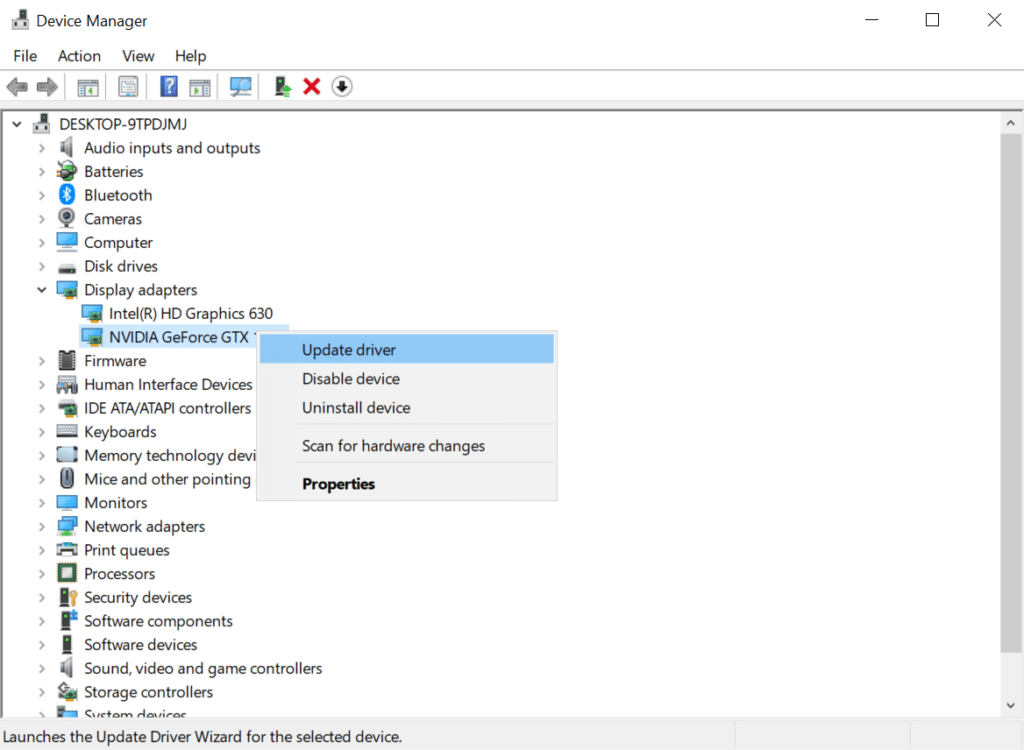
- Now click on Search Automatically for updated driver software and follow the on-screen instructions to install the latest update.
- Once done, reboot your PC and check if the issue is resolved.
Note: If the Device Manager fails to find an update, then head over to proprietary software provided by your GPU manufacturer to ensure that you are using the latest model. Here are some provided by the popular manufacturers.
GeForce Experience – Nvidia
Adrenalin – AMD
Intel Driver – Intel
6. Try Using CleanMyPC.
How long has it been since you cleaned your computer thoroughly? If it was not so long ago, now is the time since the junk files on your PC are most likely to be to blame for the problem.
A PC cleaner can help you get rid of these files and the problems they cause.
Cleaners available online are able to detect errors on your computer and fix them automatically when they’re found. We tested some of the top online cleaners and found CleanMyPC to be the best.

You can get rid of all kinds of junk files from your computer and boost its performance with CleanMyPC. Moreover, using it is quite simple! When CleanMyPC runs its scan, it detects the problem within minutes and fixes it without requiring much of your input.
Give your PC a performance boost by installing CleanMyPC!
7. Reset Windows Update Components.
As mentioned earlier, errors like the one at hand can be caused by corrupt Windows Update components which prevent the system from installing the latest updates.
You can usually fix the Windows Update components by simply resetting them since that will restore the components to their original state, free from errors. Hopefully, doing so will help you fix the issue at hand.
- Type cmd in the search bar and click on Run as administrator to launch Command Prompt with administrative rights.
- Inside the Command Prompt window, type the commands mentioned below and hit Enter after each to execute them. These commands will stop all the Windows Update Services.
net stop wuauserv
net stop cryptSvc
net stop bits
net stop msiserver
- Once done, execute the commands mentioned below one by one.
net start wuauserv
net start cryptSvc
net start bits
net start msiserver
- Finally, restart your PC and check if resetting the update components resolved the error.
This brings us to the end of our guide on fixing the PerfNet error 2004 on Windows 10. We tried walking you through all the steps in detail and hope that one of the methods mentioned in this post did the trick for you. In case you still have any confusion about the troubleshooting steps, please let us know in the comment section below!
If this guide helped you, please share it. 🙂





